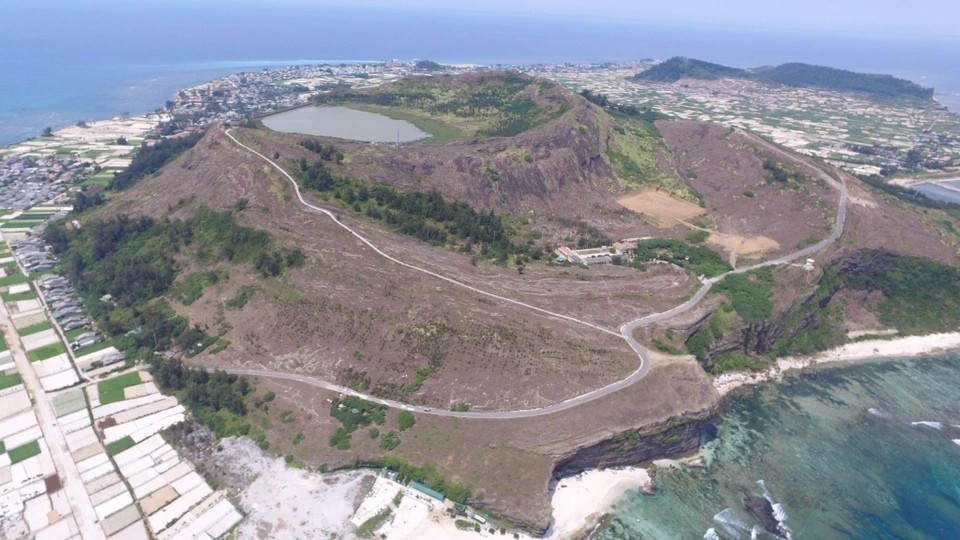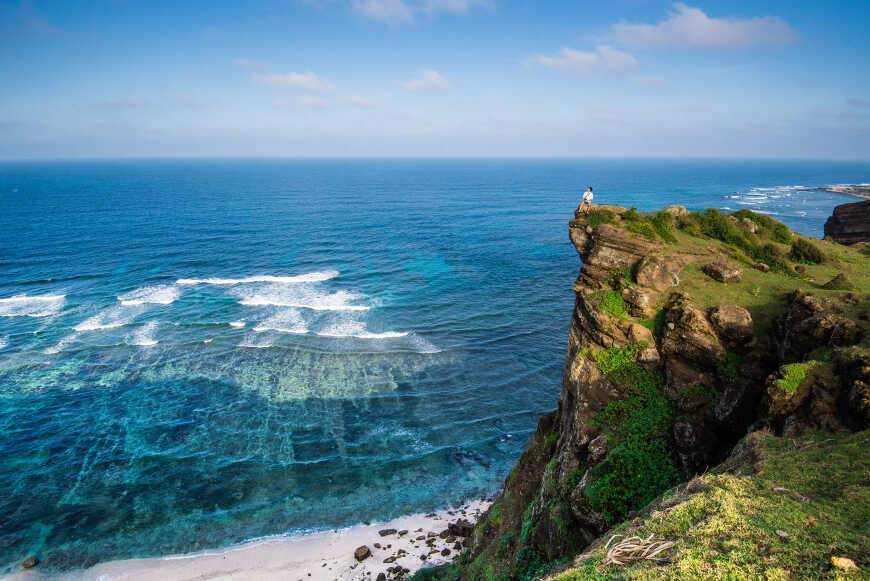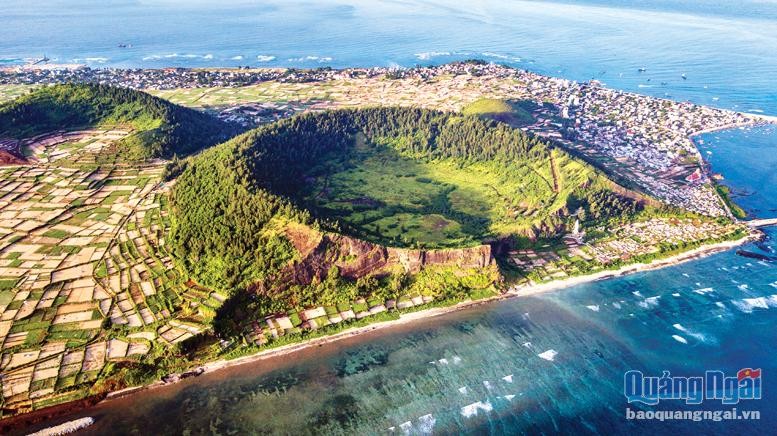A volcanic island encircled by a ring of reefs, Ly Son is a striking, stark, and geologically fascinating destination, off the coast of central Vietnam. This area currently has traces of 10 volcanic craters, including 3 craters located on the seabed, the ancient crater Hang Cau, and Hang Thuy Pagoda about 9-11 million years ago, creating the foundation of Ly Son island today.
According to the Vietnam Institute of Geological Sciences and Mineral Resources, the volcanic cluster in Ly Son and the surrounding area reveals different types of rocks and lava representing different eruptions during the Quaternary period, about 11 million to 4,500 years ago.
In January 2020, the Ministry of Culture, Sports and Tourism decided to classify 21 monuments across the country as national monuments. Among them, the Ly Son island district has two relics: the scenic Gieng Tien Mountain (An Vinh commune) and Thoi Loi Mountain (An Hai commune).
For visitors, this means striking scenery like no other. Picture other-worldly twisted rock formations. Imposing volcanic cliffs with paths and patterns that show where the red magma once ran down. Clean beaches and clear seas against the backdrop of black, jagged rocks. Some of these rock types, such as its ‘beach rocks’, are unique to Ly Son.
Thoi Loi Mountain
Enjoy panoramic vistas from vantage points such as the 169m Thoi Loi peak – the edge of the island’s largest crater. On top, there’s a 20m national flagpole; and the freshwater lake that supplies residents with water.
 |
| Enjoy panoramic vistas from vantage points such as the 169m Thoi Loi peak – the edge of the island’s largest crater. Photo: Dan Tri |
Thoi Loi is the first stop on any tour of Ly Son. The road to the summit is winding and zigzagged, so an electric car is the most popular method to get there. Some visitors, however, take motorbikes, so they can pause on the way to take beautiful images.
Around the mountain are many scenic spots including Cave Pagoda, the National Flag Pole, the Light House, and a freshwater lake. After passing through the tough path to get to the top of the mountain, visitors will be overwhelmed by the spectacular view of the sea, mountain, and sky.
The National Flag Pole is 20 meters high and looks out to Hoang Sa (Paracel) Island. The ordinate of Ly Son is written on the main side of the pole and the stand is painted red to match the color of the flag as a symbol of Viet Nam’s maritime sovereignty.
 |
| The mesmerizing beauty of Thoi Loi Mountain. Photo: Shutterstock |
Traces of volcanic eruption still remain on Thoi Loi mountain, at Cave Pagoda, Cau Cave, and particularly the freshwater lake. Part of the lake was created by the building of a huge dam in 2012. The lake is the major water supplier for farms on the mountain. Beneath Thoi Loi are garlic fields comparable to colorful chessboards.
The basin of the Thoi Loi crater was used to build a freshwater reservoir with a capacity of 270m³. To do this, Quang Ngai province built a dam 202m long, 11m high, and 1.6m wide.
Thoi Loi Reservoir was completed and put into use in May 2012 and is an extremely important project because freshwater resources on the island are quite scarce.
Gieng Tien Mountain
Another crater to explore is Gieng Tien Mountain – the second largest, it’s home to the Duc Pagoda, with its beautiful Avalokitesvara Bodhisattva statue. Visit the French colonial Ly Son lighthouse for gorgeous sunset views.
 |
| The Gieng Tien volcanic crater. Photo: Bao Quang Ngai |
Gieng Tien crater is hundreds of meters wide, 30-40m high, located in the west of Ly Son island district.
Ly Son people believe that the Quan The Am statue at Duc Pagoda always protects the ships of island fishermen in the vast ocean.
Ly Son has over 50 shrines and temples, including a 400-year-old cave pagoda that’s 24 meters deep. Hang Pagoda (“the stone pagoda from heaven”) is guarded by a sculpture of Guanyin, the Goddess of Compassion. Tourists should also visit the well-preserved early house temples of the island, An Vinh and An Hai, built in the Nguyen dynasty’s architectural style.



